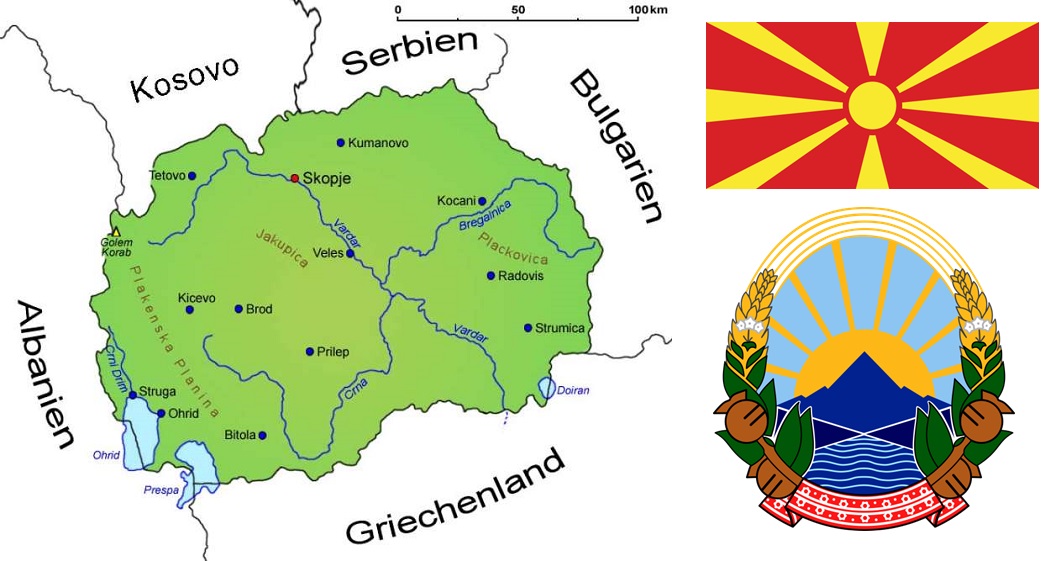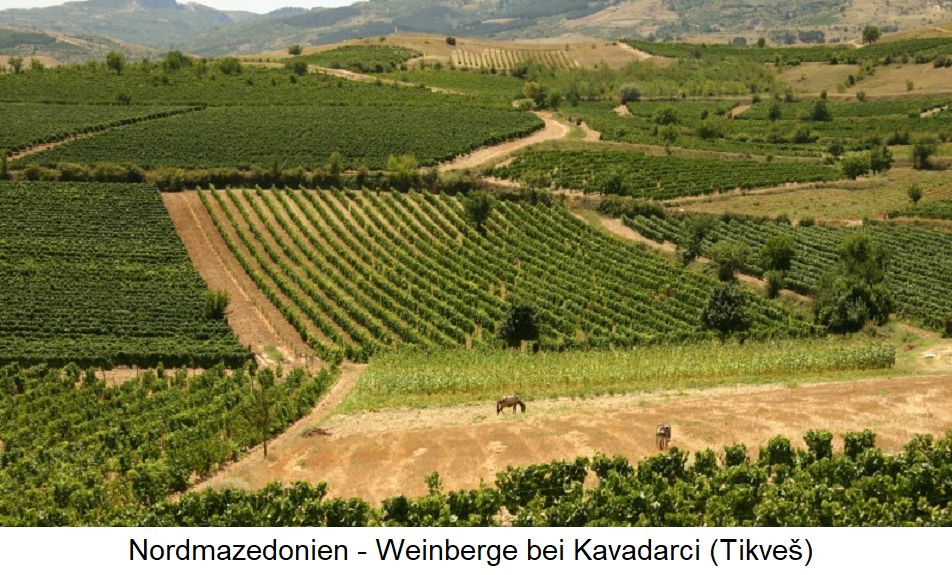Results
2,284 Results
Loading more Results ...
Loading more Results ...
Wine regions in North Macedonia 2 growing regions
Description to North Macedonia
The Republic of North Macedonia in south-east Europe with the capital Skopje covers 25,713 km². It borders Serbia to the north, Bulgaria to the east, Greece to the south, Albania to the west and Kosovo to the north-west. It is partly located in the north-west of the historical region of Macedonia. The state was founded in 1991 under the name Macedonia following the collapse of the former communist state of Yugoslavia. For historical reasons, both Macedonia and Greece (for the region of Macedonia with the three-fingered peninsula of Chalkidiki and the monastic republic of Athos) claimed it as their own. After many years of dispute, the two states reached an agreement in 2018. On 12 February 2019, the region was officially renamed North Macedonia (Republika Severna Makedonija).

Viticulture
Viticulture in North Macedonia has a long tradition and three thousand years of history. Wines from Macedonia were already in great demand in ancient times, but also during the Ottoman domination of the Balkans. The Mediterranean-continental climate is characterised by mild winters and warm summers. The wine law that came into force in 2004 is based on EU standards. The designation for quality wines of controlled origin is Vrvno Vino. In the 1980s, two thirds of Yugoslavia's wine production was produced in Macedonia. Today, the 40 or so wineries are completely privatised. The most important producer is the Tikves winery, which was founded in 1946 as a winegrowers' co-operative. Others are Bovin-Negotino, Lozar-Veles and Povardarie-Negotine. The red wines from the autochthonous varieties Kratosija (Tribidrag) and Vranac, which dominates with around a third of the area, should be emphasised. There are three wine-growing regions:

Povardski (Vardar Valley)
This is where 85% of North Macedonia's wines are produced. The wine-growing regions are located in the centre along the river Vardar. These are Gevgelija-Valandovo, Kochani-Vinica, Ovce Pole, Skopje, Strumica-Radoviste, Tikveš, Titov Veles and Veles.
Pcinsko Osogovski
The eastern wine-growing regions of Kocani, Kratovo, Kumanovo and Pijanecki are located here.
Pelagonijsko-Poloski
The wine-growing regions of Bitola, Ohrid, Tetovo, Kicevo, Prilep and Prespa are located here in the west.
Grape variety index
In 2021, the vineyards covered 25,559 hectares and the wine production volume was 936,000 hectolitres. Around 80% of the vineyard area is planted with red wine varieties and 20% with white wine varieties. The grape variety index (Kym Anderson):
Grape variety |
Colour |
Synonyms or name in North Macedonia |
Hectare |
| Vranac | red | Vranec | 9.500 |
| Dimyat | white | Smederevka | 6.500 |
| Merlot | red | - | 1.240 |
| Cabernet Sauvignon | red | - | 1.020 |
| Tribidrag | red | Kratošija | 1.000 |
| Riesling | qwhite | - | 900 |
| Chardonnay | white | - | 750 |
| Pinot Noir | red | - | 500 |
| Rkatsiteli | white | - | 460 |
| Prokupac | red | - | 445 |
| Muscat Blanc / Muscat | white | Temjanika | 400 |
| Stanušina Crna | red | - | 400 |
| Muscat d'Hamburg | red | - | 350 |
| Welschriesling | white | Graševina | 270 |
| Pamid | red | Plovdina | 250 |
| Župlyanka | white | - | 250 |
| Sauvignon Blanc | white | - | 185 |
| Žilavka | white | - | 185 |
| Plavac Mali | red | - | 50 |
| Kadarka | red | - | ? |
| Opsimo Edessis | white | - | ? |
| Traminer | white | Traminac | ? |
| Začinak | red | - | ? |
| Ohridsko Crno | red | - | ? |
| Terrano | red | - | ? |
| remaining red varieties | red | - | 71 |
| remaining white varieties | white | - | 51 |
Map: Goruma
Flag: by User:SKopp, Public domain, Link
Coat of arms: by MacedonianBoy, Public domain, Link
Vineyards: by F00700I - Own work, CC BY-SA 3.0, Link
Source 1st paragraph: WIKIPEDIA North Macedonia
Recent wines 8
 Chateau Kamnik
—
2018 Syrah Reserva "Ten Barrels"
Up to 35.00 €
Chateau Kamnik
—
2018 Syrah Reserva "Ten Barrels"
Up to 35.00 €

 Chateau Kamnik
—
2019 Gewürztraminer "The Orange"
Up to 25.00 €
Chateau Kamnik
—
2019 Gewürztraminer "The Orange"
Up to 25.00 €


